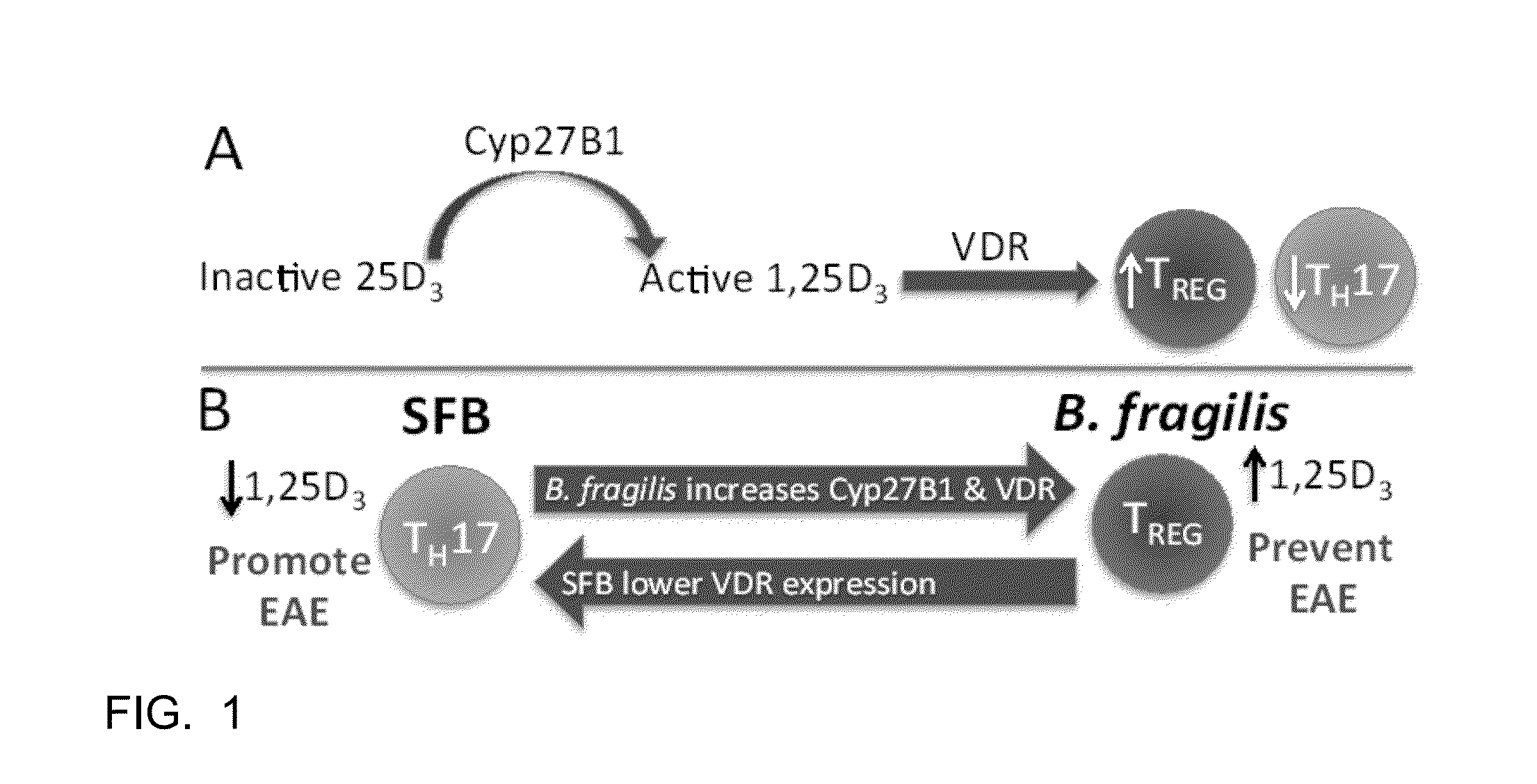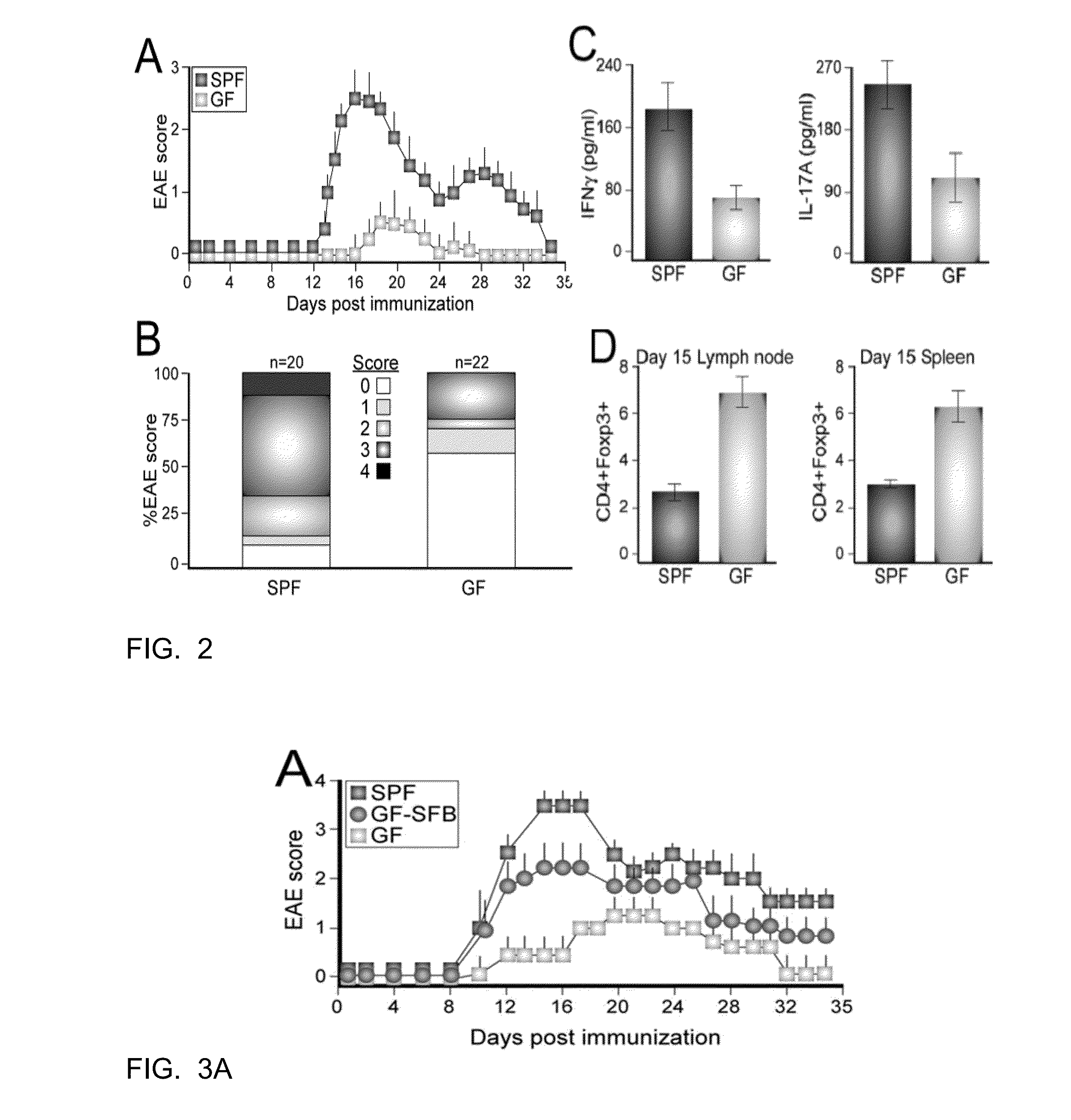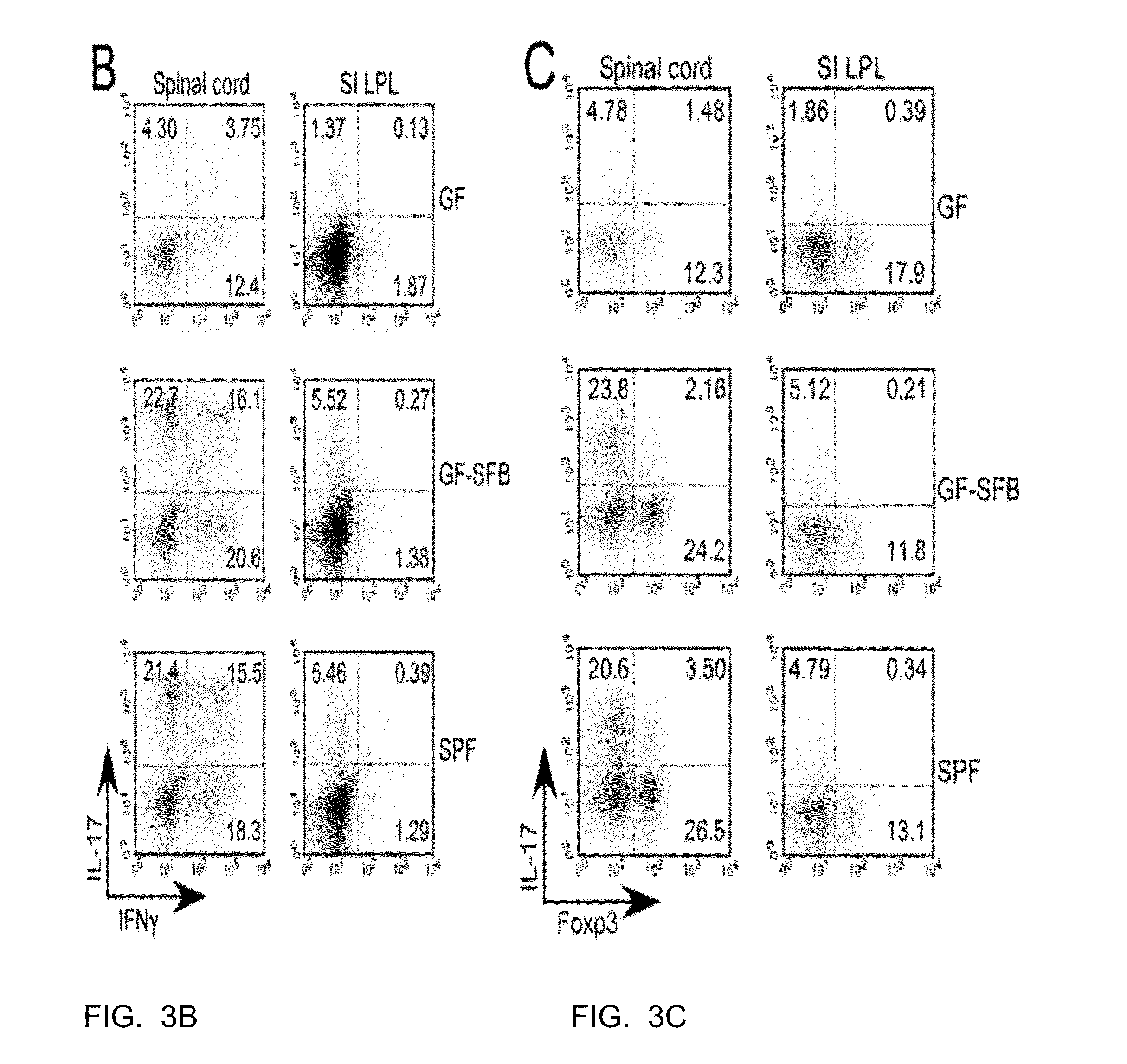Novel therapy for multiple sclerosis using vitamin d and gut bacteria
a technology of gut bacteria and vitamin d, applied in the field of multiple sclerosis treatment, can solve the problems of decreased judgment, memory disturbance, inattention, etc., and achieve the effect of increasing the number of treg cells in the central nervous system and increasing the number of treg cells in the subj
- Summary
- Abstract
- Description
- Claims
- Application Information
AI Technical Summary
Benefits of technology
Problems solved by technology
Method used
Image
Examples
example 1
[0033]Mammals are colonized with 100 trillion indigenous bacteria that have profound contributions to human health [20]. The gastrointestinal tract harbors the greatest numbers and complexity of microorganisms, known as the gut microbiota, which regulates human nutrition, metabolism and immune function [21]. The inventors have shown that the microbiota mediates the development of the mammalian immune system [3]. Most intriguingly, the inventors and other groups have recently linked the gut microbiota to EAE [2,6,7]. The human commensal, Bacteroides fragilis, produces an immunomodulatory molecule (named polysaccharide A; PSA) that prevents and treats colitis in mice [4,5,22]. Furthermore, Kasper and co-workers have shown that PSA ameliorates and treats EAE [6,8]. PSA from B. fragilis suppresses uncontrolled immune activation in both experimental colitis and EAE, and thus represents a potential therapy for autoimmune disease [23].
PUM
 Login to View More
Login to View More Abstract
Description
Claims
Application Information
 Login to View More
Login to View More - R&D
- Intellectual Property
- Life Sciences
- Materials
- Tech Scout
- Unparalleled Data Quality
- Higher Quality Content
- 60% Fewer Hallucinations
Browse by: Latest US Patents, China's latest patents, Technical Efficacy Thesaurus, Application Domain, Technology Topic, Popular Technical Reports.
© 2025 PatSnap. All rights reserved.Legal|Privacy policy|Modern Slavery Act Transparency Statement|Sitemap|About US| Contact US: help@patsnap.com



